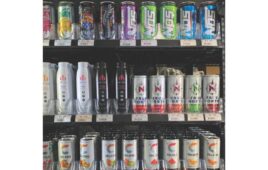 Arguably, no state in the country has more convoluted tobacco laws to challenge both consumers and merchants than New York.
Arguably, no state in the country has more convoluted tobacco laws to challenge both consumers and merchants than New York.
By Jim Calvin
Here in New York, what remains of the beleaguered tobacco category in convenience stores is under constant attack by health advocates and regulators who resemble hyenas feasting on a zebra carcass.
IT’S A JUNGLE
The 677% spike in state cigarette excise tax during the 2000s—which succeeded in chasing more than half of our cigarette customers into the arms of low-tax street dealers, lower-tax border states and no-tax tribal outlets—has been followed in the 2010s by a barrage of local regulatory activity at the county, city and town levels across the Empire State.
In part, regulations dictate: let’s elevate the purchase age to 21. Let’s restrict where e-cigarette users can vape. Let’s force stores to get a local tobacco license on top of the state license they already have. Let’s ban tobacco sales within half a mile of a school. Let’s make stores hide their tobacco displays.
These local actions follow a familiar pattern. Anti-tobacco activists approach a pliable member of a town board or county legislature, feed him or her a stack of boilerplate alarming national statistics about the health consequences of tobacco, insist the only way to address this crisis is to pass this week’s local tobacco retailing restriction, whisper that the legislator will be a hero for undertaking such an inspiring initiative and helpfully offer “model legislation” that was drafted by a New York State taxpayer-funded pack of highly-educated anti-tobacco proponents in Boston.
The average time from introduction to adoption is about five minutes, depending on the length of the piece of legislation being read.
What follows is a real example of how ridiculous the process has gotten.
MONEY OUT
The Ulster County Health Department, enforcing the New York State Public Health Law ban on selling tobacco to a minor, carries out an undercover compliance check and cites the store owner for a violation.
Since it’s his or her first offense, he or she will be fined $300 to $1,000 and assessed one or two points on his or her state tobacco enforcement record, depending on whether the clerk had received state-certified tobacco sales training (if the store accumulates three points or more in any 36-month period, its state tobacco and lottery licenses will be suspended for six months).
But wait. The county now has its own local law requiring a county tobacco license and prohibiting underage tobacco sales. It says if the store owner in the above case is found guilty, even if it’s the first offense, he can additionally be fined up to $250 by the county, and his county license to sell tobacco can be suspended for up to three months.
These actions aren’t instead of the state penalties mentioned above, but in addition to them. So an offense the state views as not warranting license suspension results in suspension of tobacco selling privileges, nonetheless.
If this were a football game, the county would be penalized 15 yards for piling on. Instead, the local newspaper cheers the county for taking bold and decisive action to save the children from money-grubbing tobacco merchants.
The act of entities piling on is so extreme that there now are three redundant levels of retail tobacco enforcement in the state of New York. In addition to state and county underage tobacco stings, the U.S. Food and Drug Administration (FDA) does its own, separate compliance checks—by the thousands. There is no coordination whatsoever with the state or county health departments.
Inspectors from the different agencies unknowingly pass each other on the road en route to their next sting.
It’s all designed to harass and punish area retailers for having the audacity to sell legal tobacco products to adult customers who choose to use them despite the known health risks.
Jim Calvin is president of the New York Association of Convenience Stores, a trade organization representing New York State’s 8,000 neighborhood convenience stores, mini-marts and bodegas. NYACS this year is marking its 30th anniversary.




